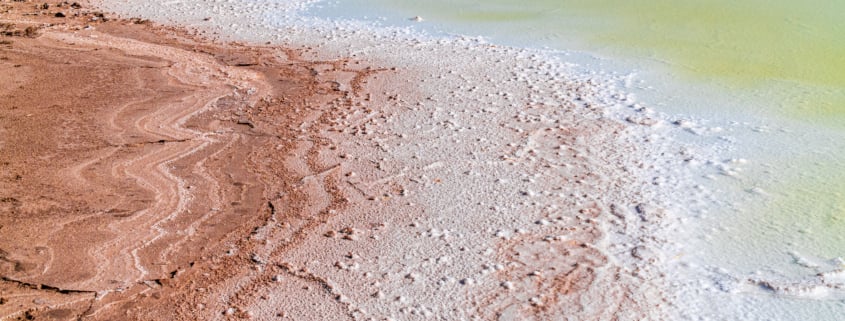Texas is home to an incredibly diverse range of water bodies—freshwater rivers, brackish estuaries, and hypersaline inland basins. Among them, Salt Lake in Howard County stands out as the saltiest body of water in Texas, shaped by extreme evaporation and unique geological conditions.
Where Is Salt Lake and Why Is It So Salty?
Salt Lake lies in Howard County, near Big Spring in West Texas. Unlike traditional lakes fed by rivers or rainfall runoff, Salt Lake is part of a gypsum-rich salt playa system—a shallow, intermittent salt lake formed when rainwater or runoff accumulates in a low-lying basin and evaporates, leaving behind a thick crust of salts and minerals.
These salt playas (also called salt flats) are a unique geological feature of West Texas. The Salt Playa near Howard County, in particular, is known for its striking white mineral crust, formed from evaporated water saturated with dissolved gypsum and other minerals.
- Water has no natural outflow, so minerals accumulate
- Underlying gypsum and salt formations leach minerals into the basin
- High temperatures and dry climate accelerate evaporation
Salinity Levels in Texas Water Sources
- Gulf Coast Aquifer (brackish zones): 3,000–15,000 mg/L TDS
- Pecos River (western stretches): Elevated due to geology and irrigation return
- Salt Lake (Howard County): Often exceeds 100,000 mg/L TDS
Oil & gas formation water: Varies, but many exceed 50,000 mg/L
These salinity levels make these water sources unusable without treatment for most industrial, agricultural, or municipal applications.
Why Does High Salinity Matter?
High salinity in surface and groundwater poses several challenges:
- Infrastructure Damage: Saltwater is highly corrosive and can damage pipes, pumps, and other water infrastructure
- Crop Failure: Most plants are not salt-tolerant, and high salinity makes water unusable for irrigation
- Health Concerns: Water with elevated sodium or chloride levels can be harmful, particularly for individuals with hypertension or kidney problems
- Regulatory Restrictions: Many industries must meet specific water quality standards that exclude high-TDS water sources
How ADVANCEES Treats Saline Water
Our Saline Water Solutions Include:
- Seawater Desalination Systems SWRO (Seawater Reverse Osmosis) Systems: For extreme salinity conditions like those found in Salt Lake or oilfield brines
- Brackish Water Reverse Osmosis Systems BWRO: For groundwater sources with 3,000–15,000 mg/L TDS
- Solar-Powered Reverse Osmosis Systems: Ideal for off-grid or remote treatment locations in arid West Texas
- Containerized Reverse Osmosis Systems (ARKQUA): Mobile systems perfect for oilfield, agriculture, or emergency response needs
Our systems are fully customizable, designed to optimize energy use, increase recovery rates, and minimize brine discharge. We use advanced pre-treatment, membrane filtration, and post-treatment to ensure high-quality output water that meets industry standards.
Final Thoughts on Salinity and Sustainability
Salt Lake in Howard County exemplifies the hidden water reserves available in saline environments. With the right technology, these previously unusable sources can support industry, agriculture, and community resilience.



